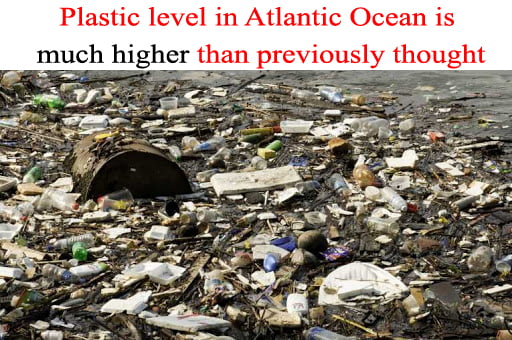As a result of the debris hidden beneath the surface of the ocean, the levels of plastic in the Atlantic Ocean are at least 10 times higher than previously estimated.
A study published by the journal Nature Communication has measured pollution from three plastic types – polyethylene, polypropylene, and polystyrene – at 12 locations across a 10,000km stretch of the Atlantic Ocean.
Research has found that microplastic is retained in the Atlantic Ocean’s top 200 metres alone between 12 and 21 million tonnes.
Scientists, who are from the UK’s National Oceanography Centre, previously estimated that the amount of plastics that has entered the Atlantic Ocean since 1950 were 17 million.
Their findings further indicate that, if the measurements taken from the ocean’s maximum 200m, there are an additional 178 million tonnes of plastic compared to previous estimates, which means ten times the previous estimates.
UK’s National Oceanography Centre is the first to have done a research on this across the entire Atlantic, from the UK to the Falklands.
Dr Katisaryna Pabortsava, of the UK’s National Oceanography Centre and lead author of the research, said: “previously, we couldn’t balance the mass of floating plastic we observed with the mass we thought had entered the ocean since 1950”.
“This is because earlier studies hadn’t been measuring the concentrations of ‘invisible’ microplastic particles beneath the ocean surface,” she added.
The seawater samples were collected between September and November 2016, and spectroscopic imaging were then used to detect and identify plastics.
Co-author Professor Richard Lampitt pointed out that, In order to assess the dangers of plastic exposure to the environment and humans, we need reasonable estimates of the amount and characteristics of this material, how it enters the ocean, how it degrades and then how harmful it is at these levels.
“This paper demonstrates that scientists have had a totally inadequate understanding of even the simplest of these factors, how much is there, and it would seem our estimates of how much is dumped into the ocean has been massively underestimated,” he said.
The study identified that plastic plays an important role in daily lives with features that are not matched by other materials.
“As plastics are likely to be widely used for many years to come, the need to quantify this material in terms of its sources, sinks and the processes responsible is a matter of considerable urgency,” the study said.
“Without this fundamental knowledge, evidence-based conclusion about harms associated with exposure to plastics as well as decisions about the ways society produces, uses and disposes of this very valuable and extraordinary material will not be possible.”
However, it said that plastic’s durability has negative ramifications when it is released into the environment through poor waste management practices.


Comments are closed.